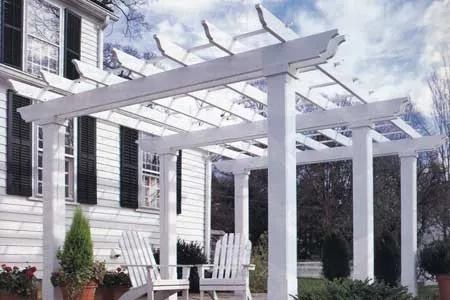We may be compensated if you purchase through links on our website. Our team is committed to delivering honest, objective, and independent reviews on home products and services.
Pergolas are both beautiful and functional, adding visual interest and a little bit of shade to your yard. This guide will walk you through building your own pergola, a project that combines carpentry skills with creative design. While it may seem daunting, you can get professional results with the right tools, materials, and a little bit of patience.
Building a Pergola Project Details
Building a pergola is a moderately challenging project that requires good carpentry skills, physical strength, and the ability to work safely from a stepladder. The cost can vary depending on the materials; cedar and redwood are more expensive, while pressure-treated pine might cost half as much. The project typically takes 16 to 20 hours, spread over two to three weekends to allow for setting and drying materials.
Our example pergola is made entirely of construction-grade redwood, chosen for its natural resistance to rot and insects. Redwood is also lightweight, easy to work with, and holds paint beautifully. It took a little longer because we chose to paint it before screwing it together so we could cover all the surfaces and avoid having to paint on a ladder eight feet off the ground.
We spent the first weekend cutting the lumber to length and applying two coats of primer. The following weekend, we dug and poured concrete footings and applied two topcoats of paint. Then, we took one more day to build the arbor and paint the posts.
Tools
 Auger bit
Auger bit Drill/driver
Drill/driver Tape measure
Tape measure Hammer
Hammer router
router
Step 1: Dig footing holes
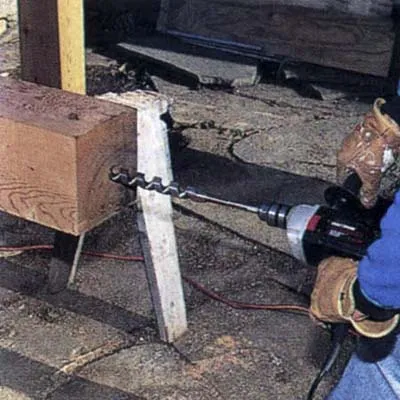
The first step in building your pergola is to create a solid foundation. Dig footing holes for each post approximately 18 inches wide and 24 inches deep or to the frost line in your area, whichever is greater. This provides stability and protects against frost heave in colder climates.
Fill each hole with concrete. While the concrete is still wet, insert a 42-inch-long piece of half-inch-diameter galvanized metal pipe into the center of each footing. (The pipe has an outside diameter of 1 1/2 inches). Leave about 18 inches of pipe protruding from the concrete. These pipes anchor your posts.
Allow the concrete to cure for at least 24 hours. Impatience at this stage could compromise structural integrity.
Step 2: Treat and lift the posts
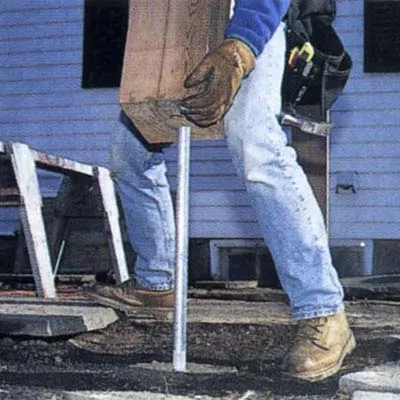
Use a long 1 1/2-inch-diameter auger or spade bit to bore a center hole into the bottom end of each post. This hole should be deep enough to accommodate the pipe protruding from the footing. Treat the bottom ends of the posts with a high-quality wood preservative.
Enlist the help of a partner to install the posts. Lift each one and align the center hole with the protruding pipe. Slowly lower the post over the pipe until it sits securely on the concrete footing. Repeat this process for all six posts.
Check each post to make sure it’s perfectly plumb (vertically straight). Use cedar shingle shims underneath the posts to adjust their alignment if necessary.
Step 3: Assemble 2×8 beams

You’ll need to create three pairs of double 2×8 beams to support your pergola’s rafters. Cut two 7 1/2-inch-square pieces of half-inch-thick pressure-treated plywood for each pair. These will serve as connectors between the 2x8s and the posts.
Attach the plywood plates to the bottom edge of two 2x8s using galvanized decking screws. Position the plates carefully so they align perfectly with the posts. This ensures that the pergola’s weight is distributed evenly. Use a level to make sure the beams are straight.
Step 4: Raise and secure the beam
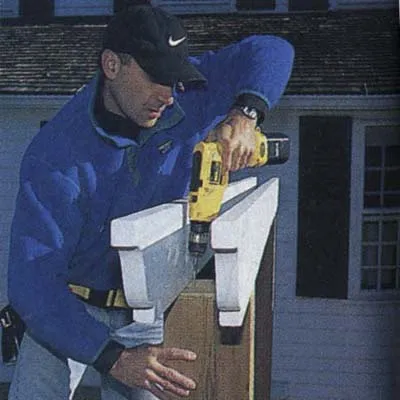
This step requires at least two people for safety and accuracy. Carefully raise each assembled beam and place it on top of the corresponding posts. The plywood plates you attached in the previous step should align perfectly with the tops of the posts.
Drive screws down through the plywood plates and into the tops of the posts. Use multiple screws per connection point for a strong, stable attachment. The number of screws will depend on the specific hardware you’re using and the manufacturer’s recommendations.
After securing, double-check that the beams are level and properly aligned. Make any necessary adjustments before proceeding to the next step.
Step 5: Lay the rafters
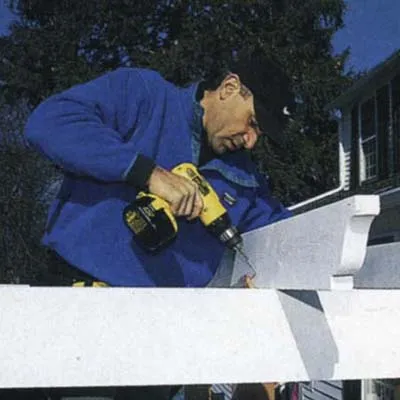
It’s time to add the rafters. These 17½-foot-long rafters will span the 2×8 beams, creating the distinctive pergola look and providing partial shade.
Space the rafters 20 inches on center across the beams. This provides some shade while maintaining an open, airy feel. Attach the rafters with 3 1/2-inch decking screws driven down at an angle into the 2x8s. Place screws alternately on one side of the rafter and then the other to hold each one straight up on edge.
Check each rafter with a level after you install it. Maintain consistent spacing between rafters for a uniform appearance.
Step 6: Lay the lattice strips
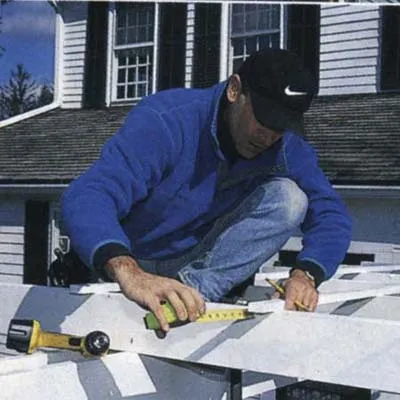
Lattice strips add more visual interest and shade to your pergola. You’ll need nine 1×2 lattice strips, each 10 1/2 feet long.
Space the lattice strips 21 1/2 inches on center across the 2×6 rafters. Make sure each strip overhangs the first rafter by two inches. As you lay each lattice strip, check that it’s straight and parallel to the others.
Step 7: Fasten the lattice
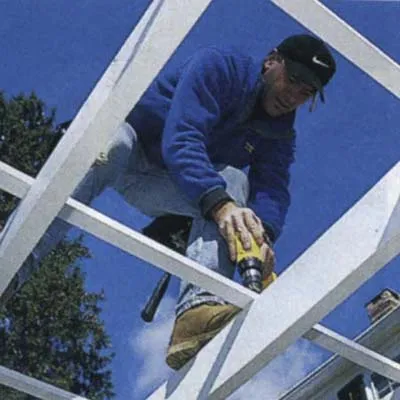
Once all your lattice strips are in place and properly aligned, use 2 1/2-inch decking screws to fasten each one to the rafters below. Drive these screws at each point where a lattice strip crosses a rafter.
Be careful not to split the wood. Pre-drilling pilot holes can help prevent splitting, especially near the ends of the lattice strips. Use a countersink bit to recess the screw heads slightly below the wood’s surface.
After fastening all the lattice strips, run your hand along each one to check for any protruding screw heads or rough spots. Sand these areas smooth to prevent any risk of splinters or snags.
Step 8: Hide the fastening plates
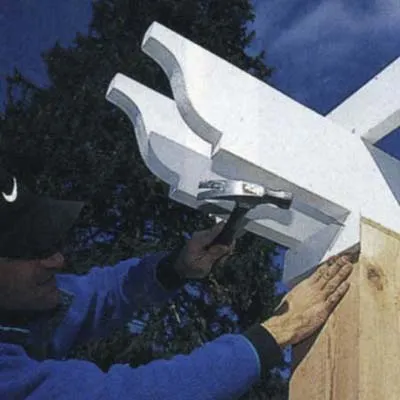
Hiding the plywood fastening plates at the top of each post gives your pergola a more finished look. Cut pieces of 1×3 trim to fit around the top of each post, covering the plywood plates and the ends of the 2×8 beams. Attach this trim using galvanized finishing nails. Pre-drill pilot holes for the nails to prevent splitting the trim.
Step 9: Finish the post corners
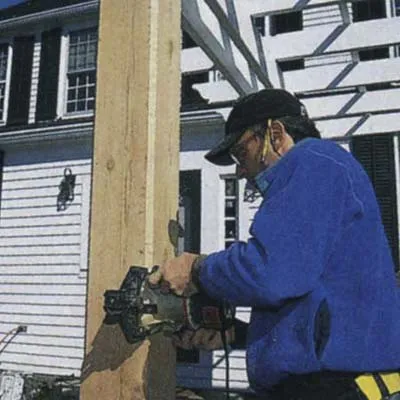
Shape the four corners of each post using a router fitted with a half-inch chamfering bit. This adds a subtle decorative element and softens the posts’ appearance.
Start the chamfers three inches below the 1×3 trim and end them 20 inches above the bottom of the posts. Make two or three progressively deeper cuts to avoid splintering the wood or overloading your router.
Smooth the chamfers using a random-orbit sander. Prime and paint them to match the rest of the structure.
Maintenance and Care of Your Pergola
Inspect your pergola annually for any signs of wear, loose fasteners, or wood damage. Clean it periodically with a mild detergent solution to remove dirt and debris.
If you’ve used untreated wood, we recommend applying a water-repellent sealer every few years to protect against moisture damage. For painted pergolas, touch up any chipped or peeling paint as you notice it to prevent wood exposure. Trim any vines or climbing plants regularly to keep them from getting too heavy for the structure.
